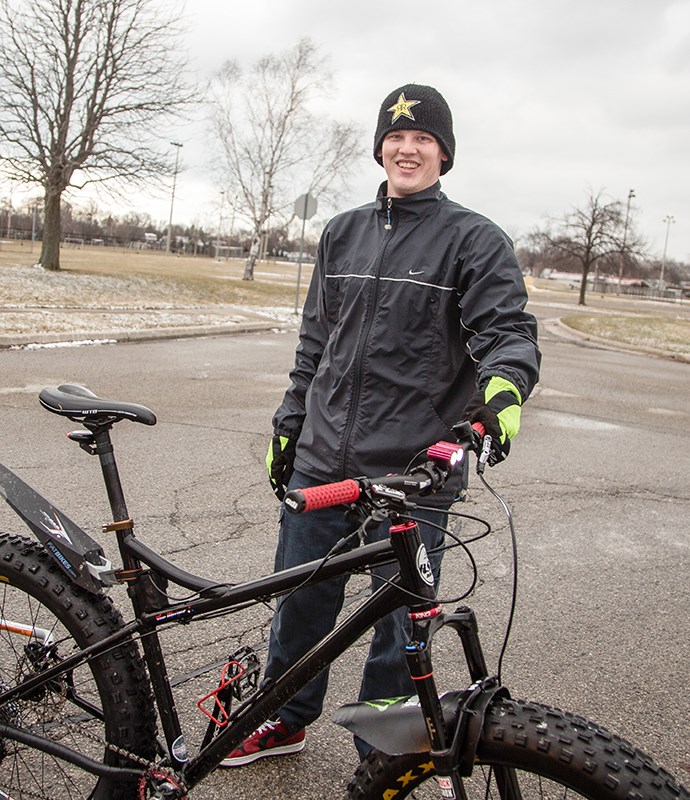Troy Shantz
Richard Taylor doesn’t store his bike for the winter like most people. He actually prefers to cycle on snow and ice.
The Sarnia man rides a “fat bike,” which is similar to a mountain bike but with wide forks and oversized tires designed to ride on soft and unstable terrain.
“When you get on a fat bike it’s a whole different game plan. You can do things that you can’t do on a regular mountain bike,” he said.
In 2014, Taylor ditched his car for a bicycle and not long afterward upgraded to a fat bike.
He commutes about 1,300 kilometers a year to his job as an auto detailer and wanted a bike that was up for any condition.
“I ride rain or shine, snow, hail, whatever,” he said.
“It’s really cool. It just brings a whole new element to riding your bike I was never familiar with.”
The origin of fat bikes and their five-inch tires can be traced to the first Iditabike race in 1987. The 200-mile race was inspired by the legendary dog-sled race, the Iditarod, and saw cyclists ride through snowdrifts, ice, and slush in the Alaskan backcountry.
The conditions proved too much for many competitors, so the next year racers welded or pinned two wheels together to create a better footprint in snow.
Today, fat bikes allow riders to boldly go where no bike has gone before.
“I can ride right out on the beach, I can get down near the water. There’s free reign,” said Taylor, adding that snow has yet to slow him down.
“You can be the first tracks out there and still bust through a foot of snow.”
Taylor has even added a trailer to his bike so he can tow three-year-old daughter Scarlett.
“It’s a big hit at her daycare. Every time I come up with the bike all her friends are watching out the window to see her off.”
Fat bikes pack a lot of value but aren’t cheap, said Scott McPhee, owner of The Bicycle Shop.
“You’re jumping in usually around that $1,500 range,” he said.
Though not a huge seller in Sarnia they do make perfect sense for some, he added.
“Anywhere where you have more of that winter climate, or a terrain where you can ride them. Guys are riding them on ski trails and cross country ski trails.”
Blackwell Cycle has sold about eight fat bikes in the seven years the store has offered them, said owner James Grant, who sees them more as a novelty.
“It’s a third or a fourth bike. It wouldn’t replace a mountain bike for me, anyways.”
Taylor said in addition to fat-biking to work he also rides his recreationally on trails.
“It seems like when you hit the road or you hit the trails nothing else matters. It’s just you, your bike, and the road that you’re on.”

